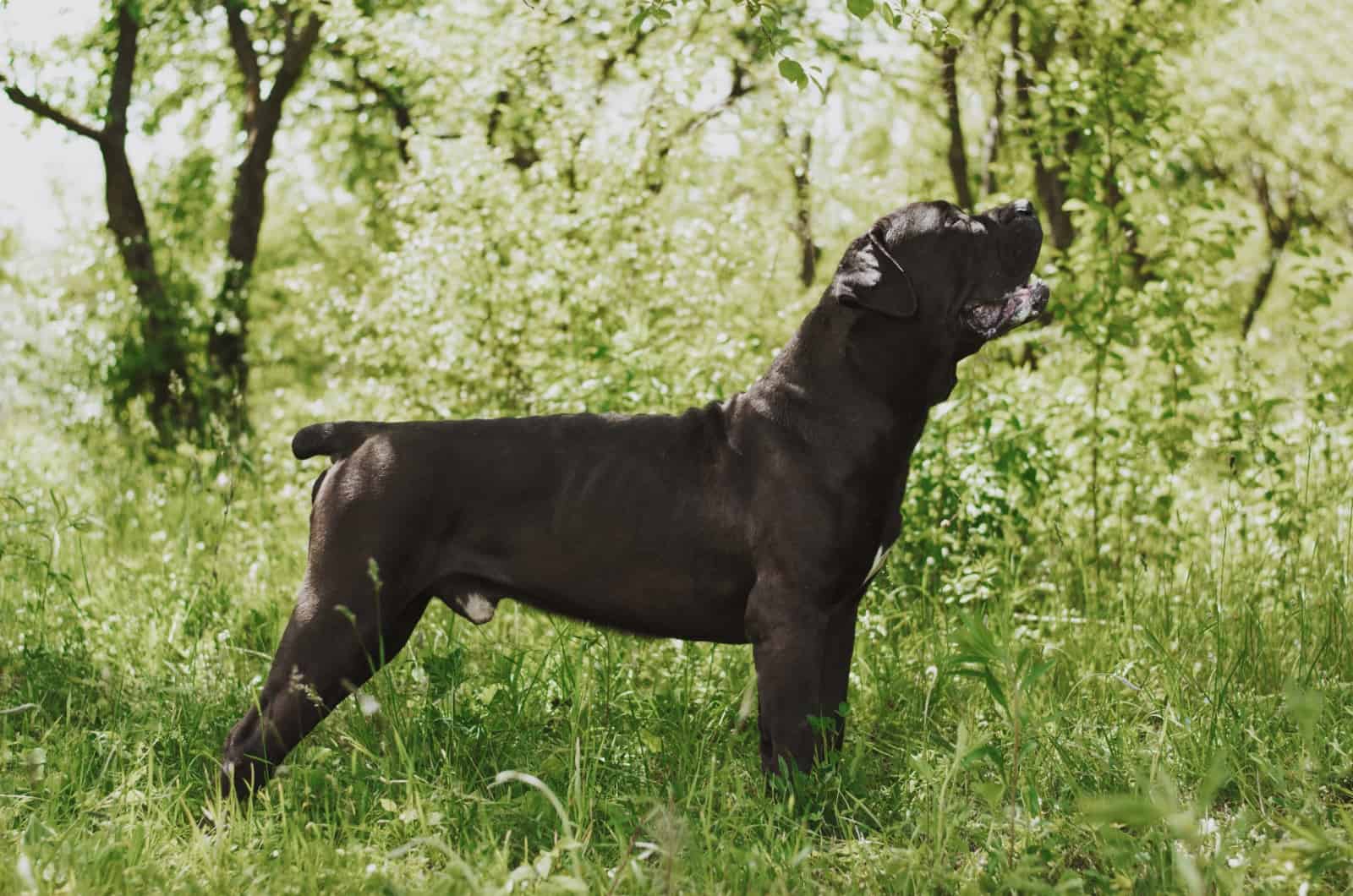When you first look at this dog breed, you will immediately think that this is an English mastiff that is somehow black. But, don’t let this pretty dog trick you. The black Boerboel, or the South African Boerboel, is a distinct dog breed.
Protecting distant South African farmsteads from vicious predators is where the Boerboels learned their craft as imposing, yet discriminating defenders of house and family. They are strong and self-assured, intelligent, and ready to learn.
It is clear from its big, blocky head, its strong jaws, and its strong muscles from the neck to the rump that it is a member of the modern mastiff-type breeds’ ancestral “mol lower” dog family. The Boerboel may be the most nimble breed of Mastiff when moving.
The powerful Boerboel is committed to safeguarding the individuals and environments he cares about. Early socialization and training are essential to prevent a pup from developing into a domineering adult.
This breed is adaptable and trainable, and it loves to be around the people it loves. A Boerboel, however, can be an excellent dog for a new owner to handle.
What Is A Black Boerboel?
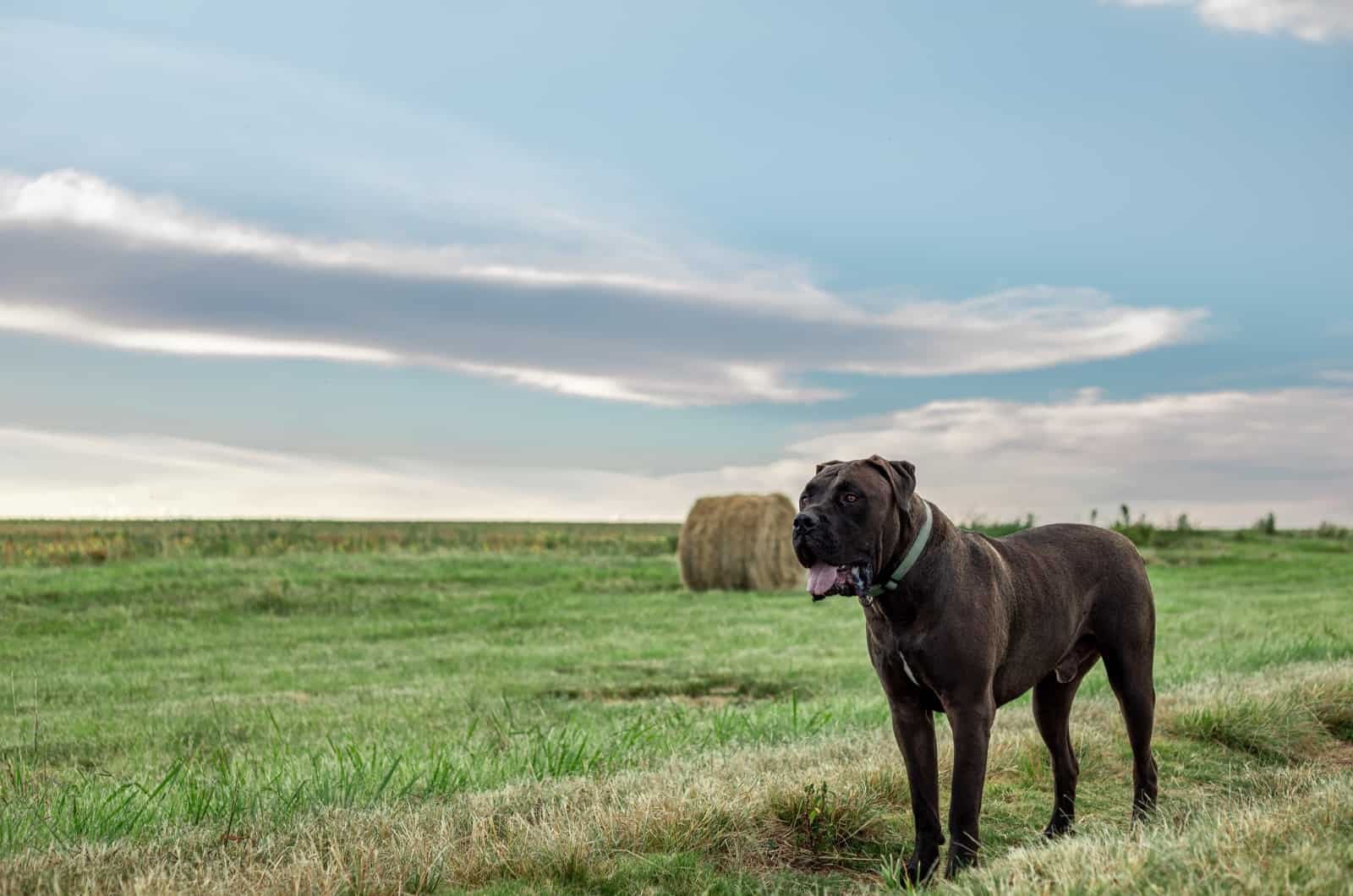
This South African Molosser’s name, which translates to “farm dog” or “Boer dog” in Afrikaans, honors the Dutch immigrants’ offspring who created the breed to protect their homesteads. The breed’s history is hazy since the Boers were so much more focused on survival than on properly lettered pedigrees.
Some people attempt to identify the Bullenbijter, a now extinct bull-fighting species and ancestor of the Boxer, which was introduced to South Africa by Cape Town’s founding father, Jan van Riebeeck, in 1652, as the origin of the Boerboel.
Other breeds were likely added over the years, such as the Great Dane and the Bullmastiff. The dog is restricted by law in many nations, including Romania, where importation was outlawed in 2002, and ownership was limited to those with a court permit.
The breed was outlawed throughout Europe, starting in Denmark in 2010; in 2011, Russia declared it a “particularly hazardous breed,” requiring national registry and licensing; and in Ukraine, it has been seen as a dangerous dog, requiring obligatory microchipping, muzzles, and insurance.
Many countries have laws restricting the possession of dogs. Transportation into Romania became forbidden in 2002, and occupancy was limited to individuals with judicial permission.
Sadly, from the upper paragraphs, we can see that people still need to understand dog breeds fully. Whatever you train your dog breed to become, it will become such.
The Black Boerboel is a South African dog breed that is renowned for its farm dog skills and guard dog skills.
Black Boerboel dogs are known as being highly loyal and protective of their family, which is an essential part of the Boerboel breed.
Where Did The Black Boerboel Come From? (Origin)
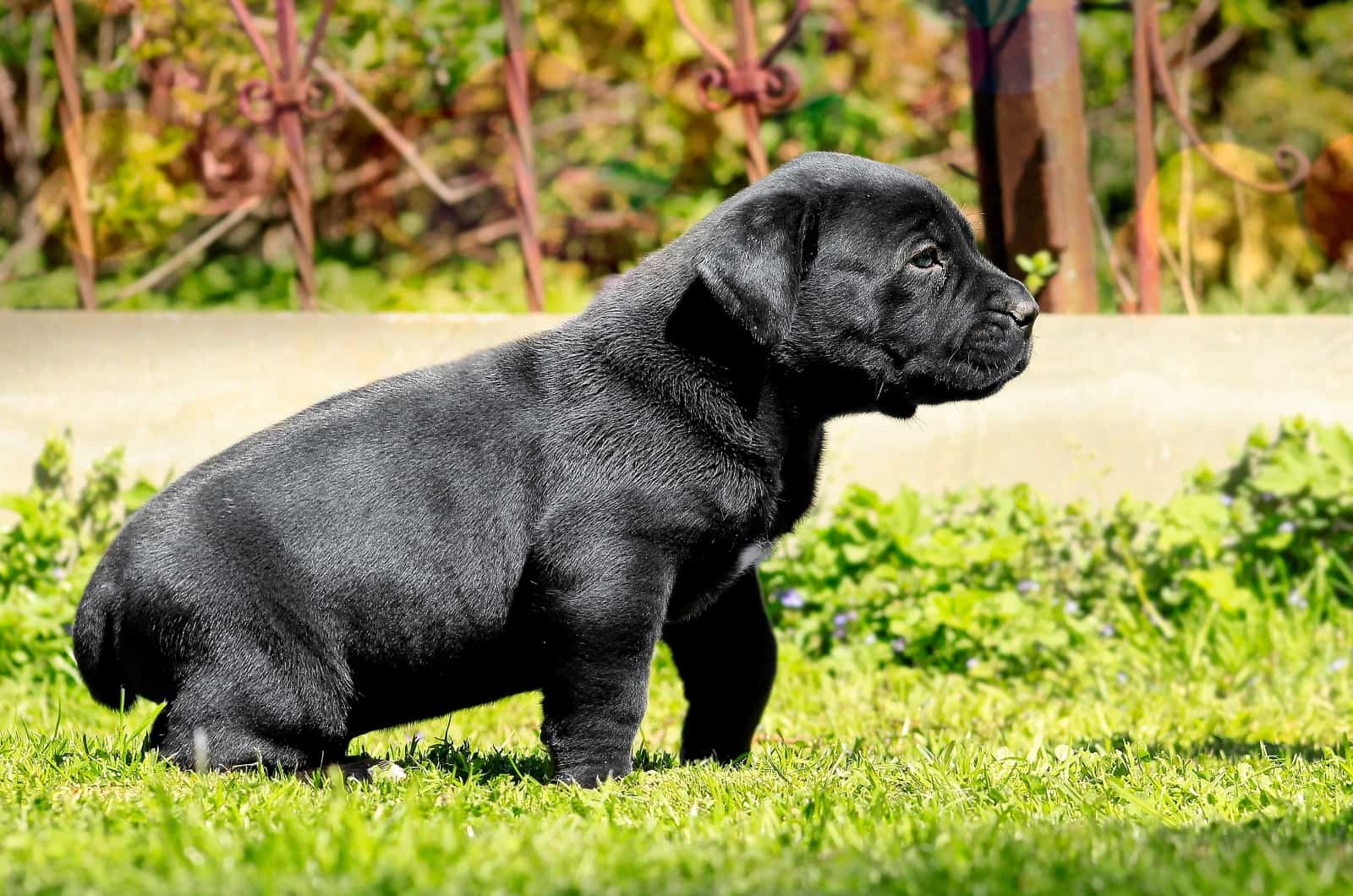
The term “Boerboel” is derived from the African and Dutch words for “farmer” (“Boer”), and “dog” (“boel”), and it seems they were farm dogs since they were raised by Dutch settlers in Southern Africa, beginning in the 1600s.
They were necessary to protect the farm and hunt threatening animals like hyenas, apes, and panthers, as well as other big cats.
Over numerous centuries, enormous, powerful canines brought by European settlers to South Africa crossed with local domestic dogs and various other breeds.
The English additionally brought Bulldogs and Mastiffs, which they crossed with Boerboels to create the modern breed. The Da Beers diamond mining corporation also brought Bull Mastiffs to protect their mines.
The specific breeds that constitute the Boerboel’s heritage are unknown, but the Boerboel’s determination and power come from the fact that only the most muscular canines could survive the scorching climate and close confrontations with wild animals.
As a result, their dogs were dispersed and frequently adopted by isolated settlements, where they were required to hunt, herd, monitor, and take protective measures against threatening individuals.
With South Africa’s urbanization following the World Wars, Boerboels began to be mated with some other dogs without consideration for breed integrity. Consequently, a handful of breed aficionados aimed to restart pure Boerboel breeding in the 1980s.
Their efforts led to the Boerboel becoming well-known in South Africa, and beginning to be exported internationally. Nevertheless, outside of South Africa, the breed is still relatively uncommon.
How Does A Black Boerboel Look?
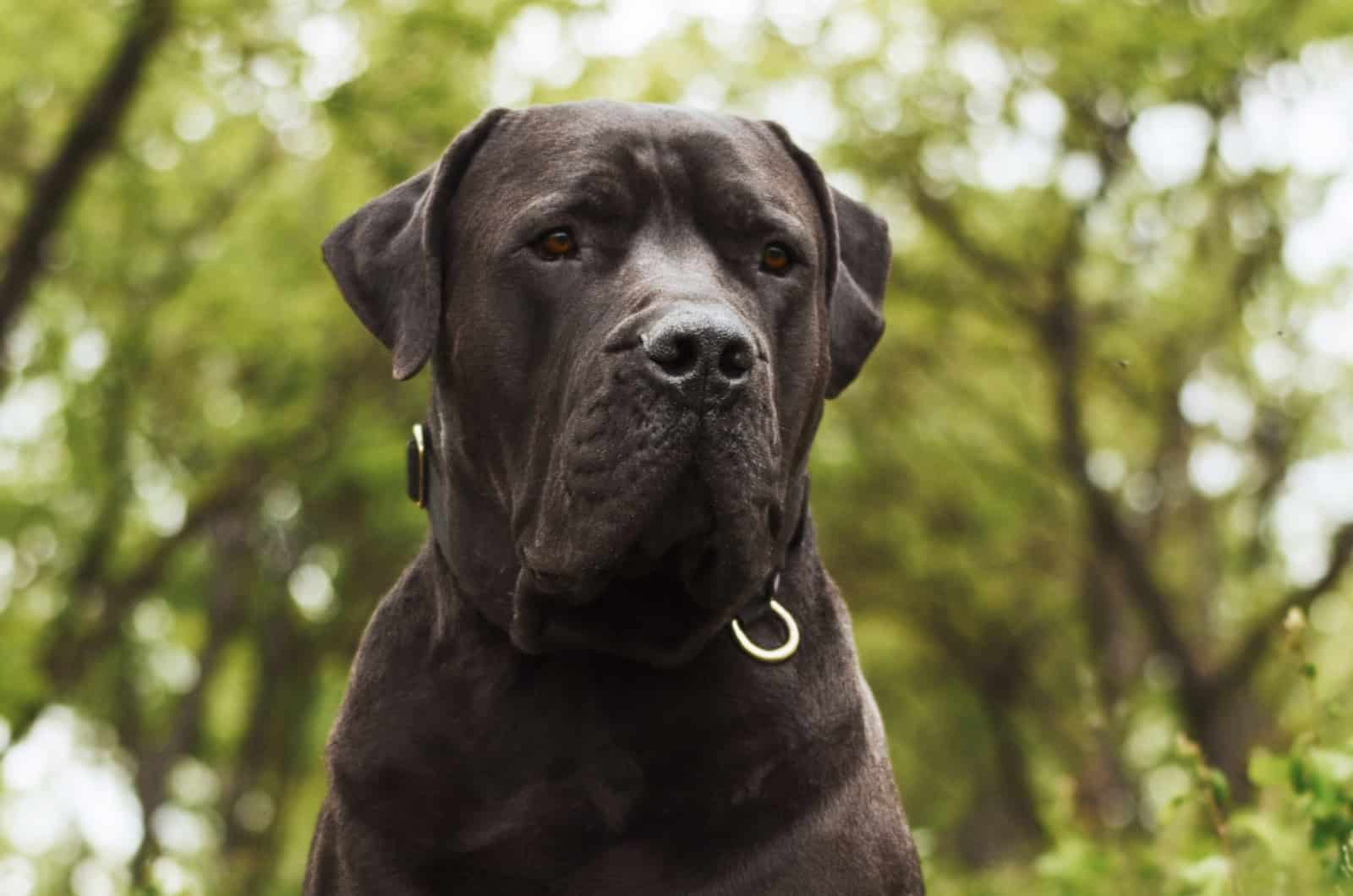
In addition to brindle, tan, chocolate, rusty, as well as red, the short, smooth coat of the Boerboel can have a number of distinctive markings.
Although they shed quite a bit, taking care of their coat is simple. Brown and horizontally-placed eyes contribute to the Boerboel’s distinctive alert and perceptive appearance.
Large, with a sturdy skeletal structure and powerfully-developed muscles, the Boerboel is a strong breed of dog. The snout is short, and the head is big and wide.
The coat is short, sleek, and covered in thick hair. A black mask may or may not be present; the recognized Boerboel colors are brindle, fawn, tan, and brown.
One slight difference between breed standards is that SABBS accepts black dogs while the Kennel Union of South Africa doesn’t.
What Is The Size Of A Black Boerboel?
This is a large dog breed.
Black Boerboels are enormous dogs, with males standing between 24 and 28 inches tall at the shoulder on average, and females usually being somewhere around 22 to 25 inches tall. Boerboels can range in size from 110 to 200 pounds, while some are larger than others.
You can always check out the Boerboel growth chart, so that you can precisely see how big this dog will get in specific periods of its life.
What Kind Of A Personality Does The Black Boerboel Have?
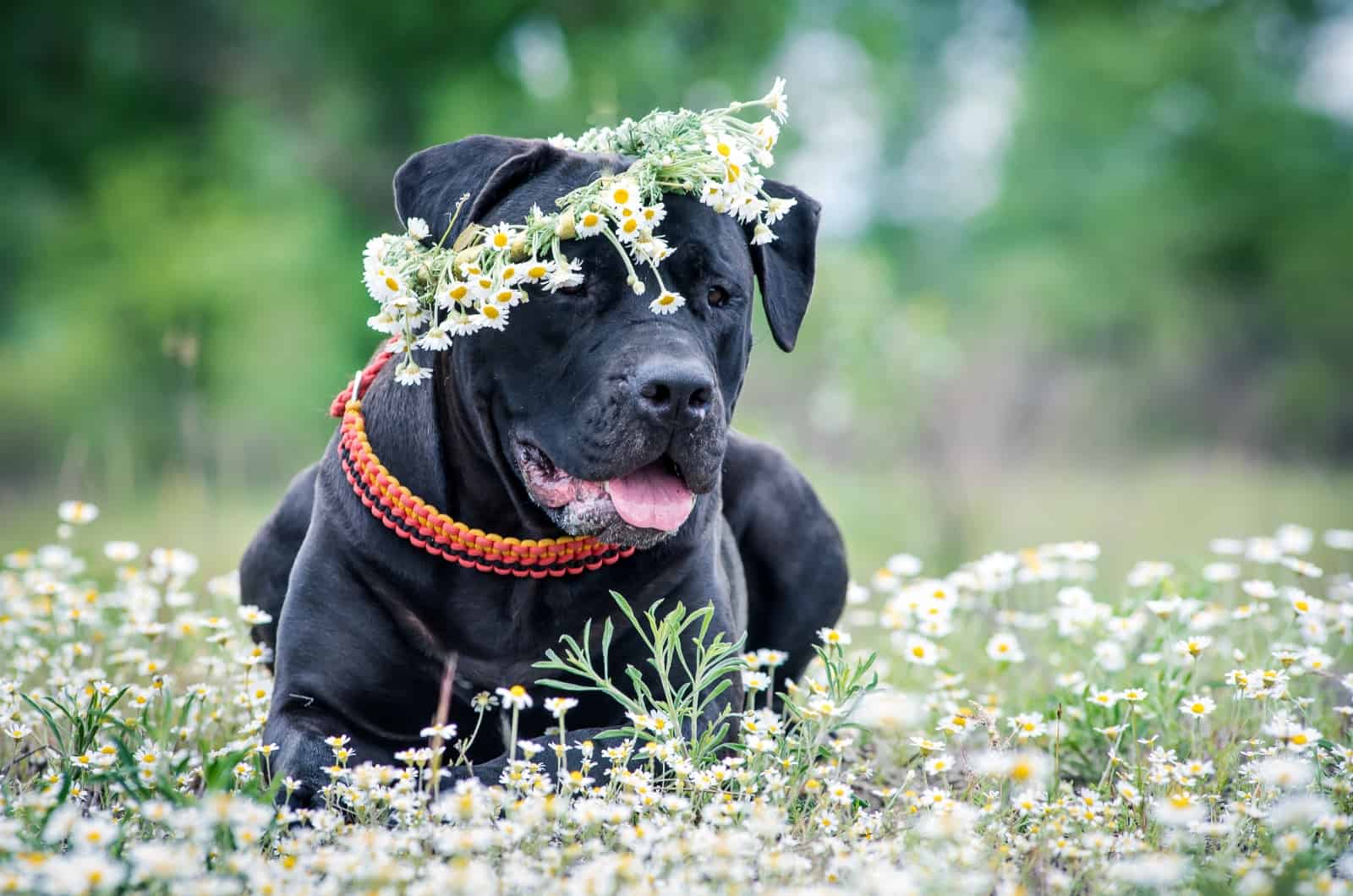
Boerboels are kind, playful, and obedient. They thrive when given a task to do, be it arduous farm chores, guard dog duties, or training for a tournament where they may demonstrate their power and agility.
Even though they can be too protective at times, this breed adores human members of the family, especially kids.
If they are not adequately socialized or taught, the impulses that make them perfect watchdogs and defenders can, however, end up making them highly possessive and violent.
It’s crucial for a member of the family to acquaint visitors with the pet black Boerboel before they arrive, so the dog will not really feel frightened. Although they might still be on guard, Boerboels often welcome visitors that they have met and trust.
Because they are hardy working dogs, Boerboels are known for their capacity to adapt to challenging circumstances. The breed, which is also employed for tracking, has a strong prey instinct, and is extremely attentive when outdoors.
They occasionally have a tendency to be a little lethargic, especially in the hot months. The dog’s health necessitates taking them outside at minimum once every day for a lengthy walk. Therefore, they occasionally require some firm persuasion.
Despite being quite independent, South African Mastiffs need a large amount of care from their master. They are devoted and compassionate toward youngsters, yet they can occasionally be a little pig-headed.
The breed is a fierce guard dog and, if threatened in any form, will valiantly protect its family—even to the point of death. It’s crucial that the Boerboel puppy receives and maintains a lot of strict discipline because of this.
Is The Black Boerboel A Good Family Dog?
Boerboels adore their humans and their family, and they are particularly renowned for guarding their young ones. Nevertheless, given their size and disposition, they could accidentally knock a kid over if the situation gets out of hand.
To prevent incidents, it’s essential to teach kids how to deal with animals. No matter how well-trained and submissive a Boerboel may be, with no poking and prodding, playtime with any dog should be monitored.
When kids have playmates over, the Boerboel’s innate protective instinct could become problematic since it might interpret playtime as hostility and guard its family.
In spite of this, the Boerboel is a breed that has been renowned for enjoying playing with human youngsters in the family, so there is no better dog to defend your children than a huge, athletic Boerboel.
Boerboels get along well with canines that they have grown up with, and that share their home, but they might be aggressive and defensive around canines that they have never met.
Additionally, when around other Boerboels that are of the same sex, they may become hostile and competitive. Early socialization may assist in reducing the breed’s aggressive tendencies, but they would fare best as the only dog in the house.
Is The Black Boerboel A Healthy Dog Breed?
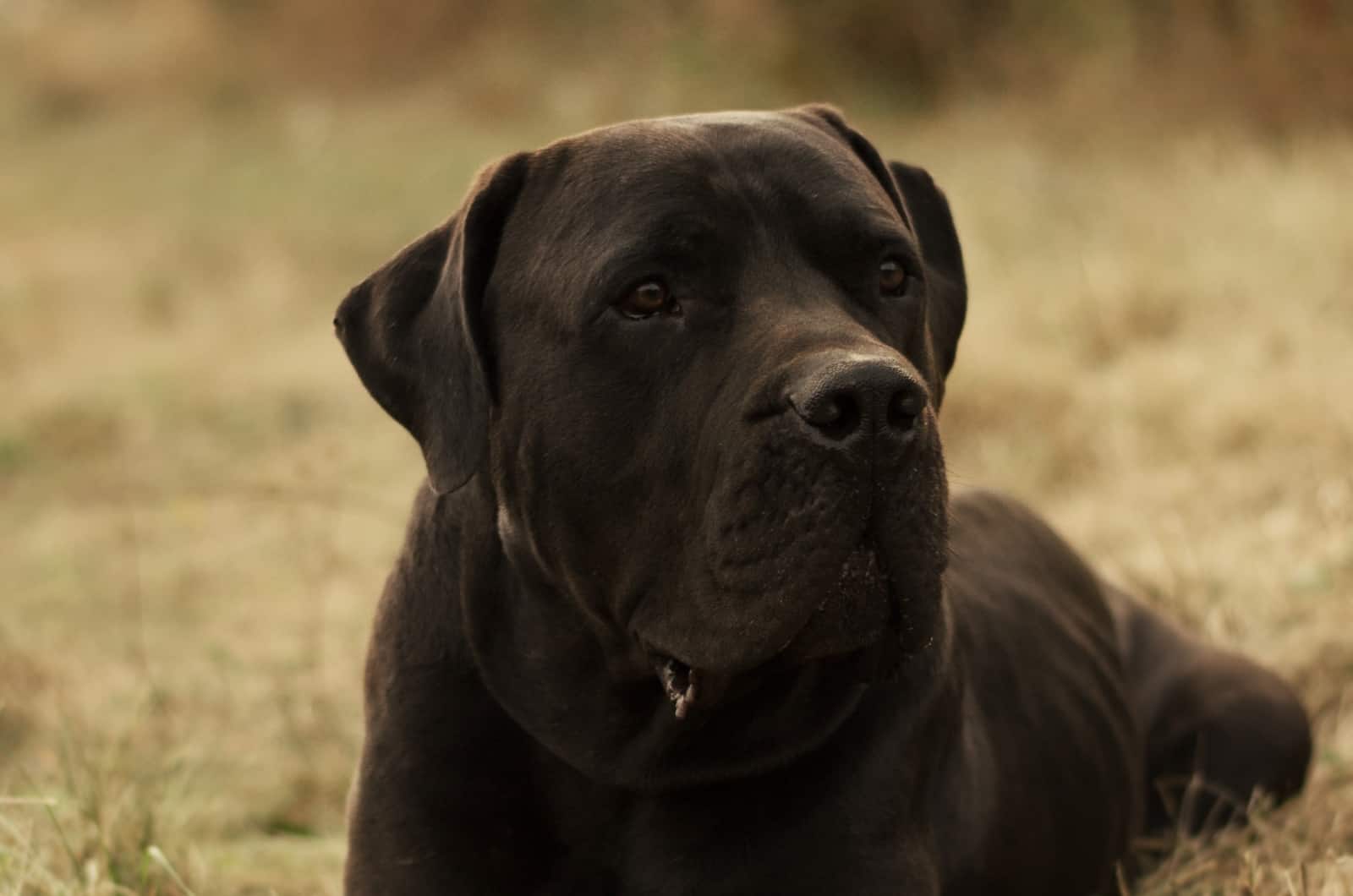
With only a few documented hereditary problems, the Boerboel is typically regarded as a healthy breed. However, they are prone to a few illnesses that they could develop throughout their life.
They could have dysplasia of the hip or elbow, heart disease, diseases of the eyes, genital hyperplasia, as well as bloat. They may sporadically experience juvenile epilepsy as well. Consult your veterinarian if your Boerboel exhibits any symptoms of any of these diseases.
Possible Health Problems
This dog breed has only a few health problems. They have no record of any kind of skin cancer problems, even if this Boer dog has been affected by the hot African sun.
This gives us the idea that this dog breed is a very healthy one, which may only have some health issues that generally appear in large dog breeds, such as the Schnauzer, the Rottweiler, the Cane Corso, etc.
They are less prone to many diseases, making them as healthy as some cross-breed dogs.
1. Hip Dysplasia
The “ball and socket” joints that make up the hips often fit together precisely to allow for simple movement. Hip dysplasia is characterized by unstable hip joints that don’t fit together properly. It results in discomfort, bruising, stiffness, and ultimately, arthritis.
Dogs with hip dysplasia typically start displaying symptoms as they mature. Medium-large breed dogs, puppies, overweight dogs, and puppies that have been overexercised when young tend to have this problem much worse.
Hip dysplasia requires lifetime therapy, and it is a painful condition. While some dogs benefit greatly from routine care (weight control, activity regulation, and pain alleviation), others do not, and they necessitate surgery. Your dog may have a long, happy life if it responds well to treatment.
The majority of dogs having hip dysplasia have hip arthritis later in life. If you suspect that your dog may be getting arthritis, consult your veterinarian.
It could be essential to think about making the excruciating decision to put your dog to sleep if their discomfort gets too bad and becomes overwhelming.
Stopping the breeding of dogs with hip dysplasia is the only method for avoiding it. There are testing programs provided to make sure your dog’s hips are sound before mating.
Inquire about hip scores from the breeder if you decide to buy a breed that is prone to hip dysplasia. Prior to getting a new dog or planning to breed your dog, always consult your veterinarian.
2. Elbow Dysplasia
The elbow joint’s developmental issues are the most typical cause of front leg stiffness in dogs. Osteoarthritis, a degenerative condition caused by this illness, affects the joint and results in loose bone fragments, bone spurs (osteophytes), and cartilage degradation.
Three bones—the humerus, radius, and ulna—combine to form the dog’s elbow joint; these bones must fit snugly together for the joint to work properly. In order to keep the elbow stable, it has ligaments on both the inside and outside.
Canines and humans both have elbow joints with a similar anatomical structure; however, because dogs balance on their front legs, different forces are exerted on the dog’s elbow.
The radius, as well as the ulna bone, make a C-shaped curve that the humerus bone might easily follow.
Young large-breed dogs frequently get the hereditary condition – elbow dysplasia. Some bones grow with a step between the radius as well as the ulna bone, which may be caused by the radius bone becoming too long or too short in relation to the ulna.
This puts additional strain on the humeral cartilage as well as conspicuous areas of the ulna bone, such as the anconeal and the coronoid processes. The bone may then develop cracks along the lines of highest stress or stop growing regularly.
This procedure may potentially harm the cartilage in the joints, and the destruction of the bone and cartilage leads to the development of arthritis.
3. Ectropion and Entropion
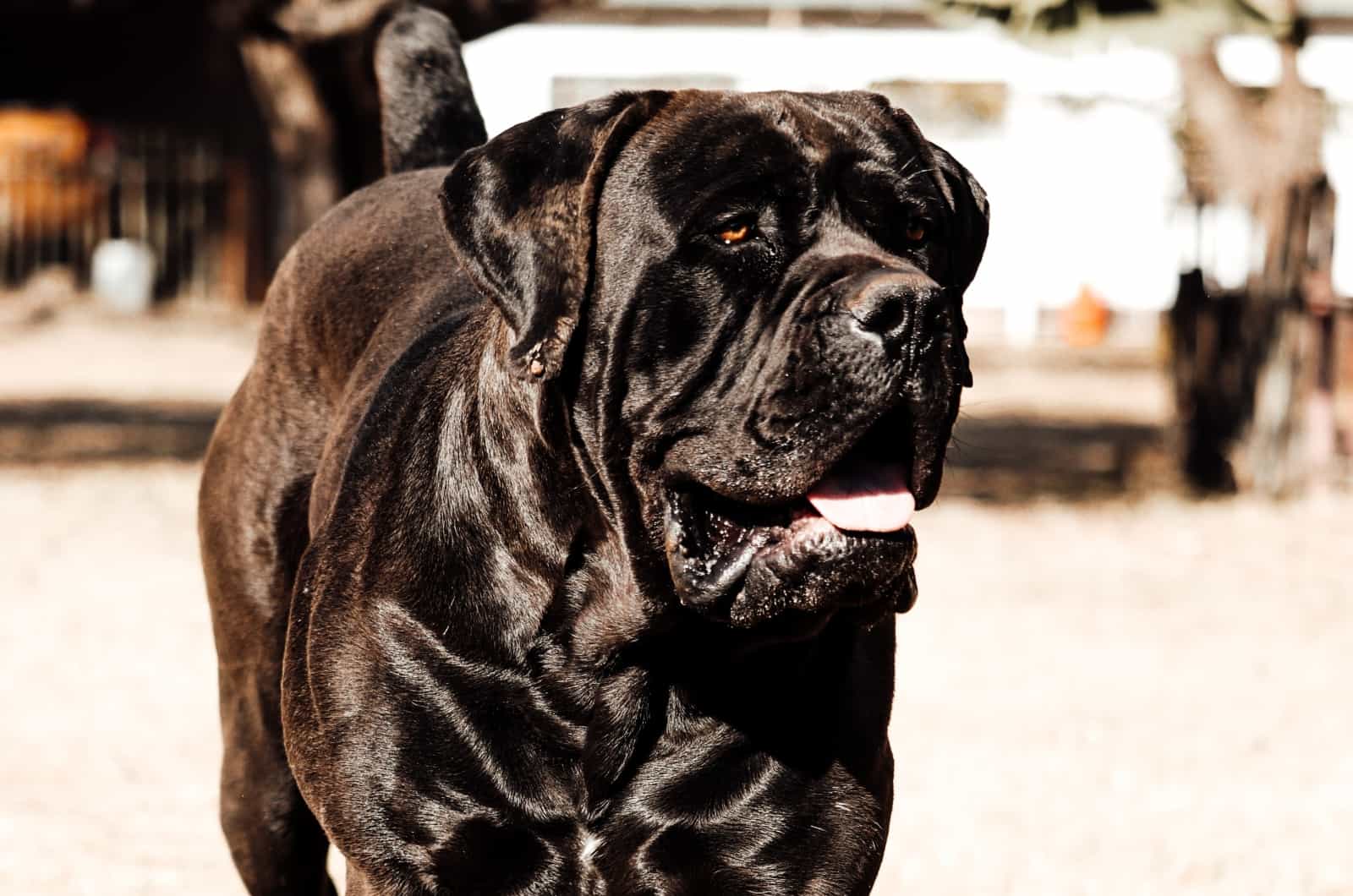
When the eyelid border rolls inward toward the eye, it is known as entropion. It most frequently affects puppies, and is typically caused by abnormal eyelid growth. A lot of puppies will recover from this disease by the time they are a year old.
“Tacking,” or brief eyelid eversion may be beneficial if the eyelid is causing ocular discomfort or injury (symptoms may include tears, straining, redness, and/or leakage).
Lifelong eyelid surgery is possible on adult dogs to shorten the eyelid and/or remove tissue from the area along the eyelid margin in order to repair the anomaly. Entropion that has been overcorrected can cause problems, and is challenging to reverse.
In order to avoid taking too much tissue out, clinicians tend to be conservative. If a suitable correction is not made during the first surgery, entropion correction may need to be repeated.
A dog is more likely to require repeated surgical procedures if they have significant eyelid abnormalities, extensive entropion, or fibrous tissue from prior wounds or operations.
The disorder known as ectropion causes the eyelid’s edge to roll outward and further from the eye. Chronic discomfort and drainage are potential side-effects of this illness, which can potentially be surgically treated.
Entropion, as well as ectropion, can cause corneal abrasion, ulcers, conjunctivitis, infections of the eyes, scarring of the cornea, vascularization of the cornea, and mineralization of the cornea. These issues can be uncomfortable and lead to visual loss.
If your veterinarian suggests performing a specific operation on your pet to address entropion or ectropion, they will go over the procedure’s advantages and disadvantages.
Complications from surgery on the eyelid or the skin around the eye are uncommon, occurring in less than 2% of these instances, and they are often minimal.
4. Heart Problems
Heart muscle disorder, known as dilated cardiomyopathy (DCM), is characterized by an enlarged, dysfunctional heart. The symptoms of canine cardiomyopathy, how it impacts their body, its diagnosis, and its therapy are all covered here.
Although some cases also entail enlargement of the atria, the ventricles (bottom chambers of the heart) expand in the majority of canine cases of DCM (upper heart chambers).
The heart’s muscular wall thins as a result of DCM, making it less able to pump more blood to the body’s other organs. Consequently, fluid can build up in several tissues, along with the lungs.
Congestive heart failure develops if the damaged cardiac muscle is not addressed and eventually overcomes the abnormally increased volume (CHF).
The dog may have fluid in or around the lungs, as well as an enlarged heart, according to radiographic (X-ray) imaging.
Cardiac arrhythmias (or irregular heartbeat) or ventricular arrhythmias may be discovered by using an electrocardiogram (EKG) (abnormally rapid heartbeat). To completely describe aberrant heart activity, a 24-h EKG (Holter monitor) could be necessary in some circumstances.
To accurately diagnose DCM, an echocardiogram or ultrasonography of the heart is necessary. This test measures the diameter of the cardiac muscle and the blood-pump efficiency of each chamber.
An echocardiography will show expansion of one or more chambers of the heart and diminished heart muscle contractile power in the case of DCM.
The management of any arrhythmia, and a variety of medicines, are frequently utilized in the complex treatment of DCM. Additionally, a diuretic may be given to reduce fluid retention in different tissues, and vasodilation may be used to widen blood vessels and enhance circulation.
5. Vaginal hyperplasia
An abnormal growth that protrudes from the vaginal area is referred to as vaginal hyperplasia and prolapse. The illness resembles fluid-filled tissue in its nature (edema). If severe, it may stop you from urinating normally.
Dogs of all ages can have vaginal hyperplasia, although younger bitches are more likely to get it. For the majority of animals, the prognosis is favorable, although there is a high likelihood of the ailment returning.
When a little protrusion exists, but does not leave the vulva itself, type 1 hyperplasia develops. The vaginal tissue, on the other hand, actually splays through the vulvar aperture in type 2 hyperplasia. At the same time, the externally visible donut-shaped tumor is known as Type 3 hyperplasia.
There are a number of symptoms that may be seen with this medical condition, such as licking the vaginal area, reluctance to mate, and pain when urinating (dysuria).
Physical examination may reveal a rounded tumor protruding from the animal’s vulvar region. To ascertain the nature and severity of the problem, a vaginal exam will be performed. The animal’s tissue could feel dry to the touch.
Usually, patients receive treatment on an outpatient procedure. Keep the region clean if there is a bulging mass, and keep an eye out for urination issues as they are frequently present.
After therapy, the medical problem will return in 66% to 100% of animals, which is a significant recurrence rate.
How To Take Care Of This Dog Breed
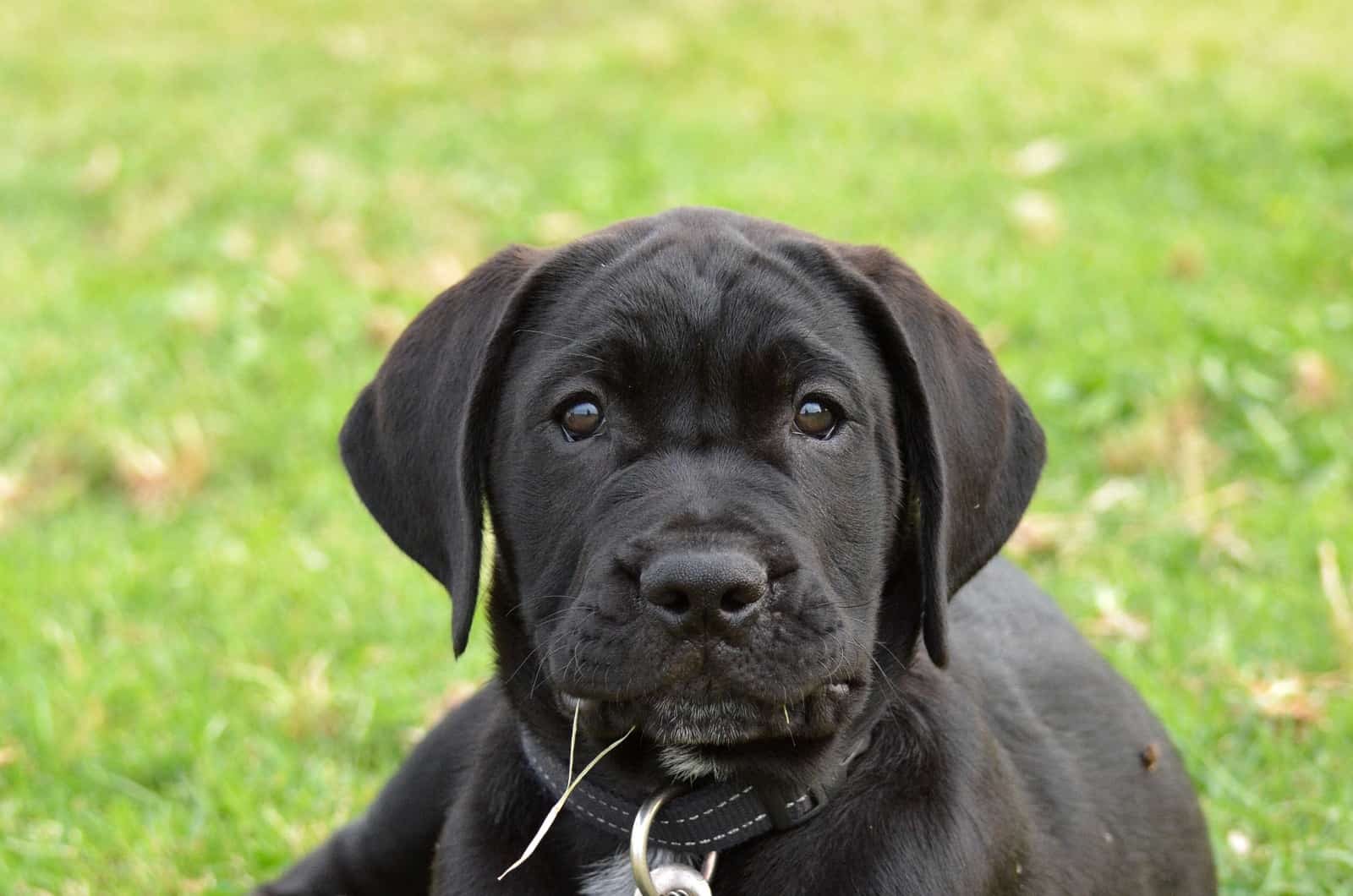
The black Boerboel does not need much-devoted care from you. They need a bath every month, and a few regular nail clippings and occasional vet checks.
They will shed moderately, so prepare a few good brushes in the shedding season. Other than that, it would be best if you prepared a nice sum of money to feed this dog properly.
Cleaning And Grooming Needs
Boerboels have a thick, dense undercoat that is covered by a short, straight, smooth, and lustrous overcoat. They come in various hues of black, fawn, brindle, brown, and red.
Some dogs have white patches on their coat, particularly around the neck, head, as well as paws; however, if the dog’s coat is over 30% white, it is said to be defective.
Countless Boerboels have dark pigmentation around their paws, and others have black patches surrounding their eyes, lips, and nose. However, these patches are not visible on our black Boerboel.
The coat doesn’t need much maintenance, and it sheds on average. To prevent fur from shedding (and maintaining healthy skin), weekly brushing and bi-monthly baths should be done.
The Boerboel’s primary need in care is to be engaged in activities that will excite its mind and body, such as play and exercise. Regular maintenance is relatively easy after that.
Their teeth should always be frequently brushed according to the veterinarian’s advice, and their nails should be cut around every two weeks.
To prevent infection and pest contamination, a Boerboels’ ears need to be cleaned and inspected weekly for dirt and wax buildup.
Exercise
They can get the required exercise through strenuous playtime, long walks, and complex equipment like puzzle feeders. Due to their size and moderate exercise needs, Boerboels need room; therefore, there are better settings than a condo.
They thrive in a house with a yard and a strong, high fence that gives them lots of room to run around securely. They are a high-energy dog breed that needs at least an hour of tiring exercise a day.
Although these dogs are not for beginners, the correct owners will be rewarded by having devoted family members that will protect their property and people by all means.
The powerful, athletic Boerboel requires a physical routine, such as lengthy leash walks or playtime with his owner in a properly fenced yard. Along with physical activity, black Boerboels need mental stimulation and a strong relationship with their owner.
They do not respond well to challenges from several other dogs, so staying away from dog parks is advised. The Boerboel ought to always be kept on a leash because of their natural need for protection.
The breed frequently takes pleasure in competing in etiquette, rally, weight pulling, agility, protection sports, and stock work.
Training
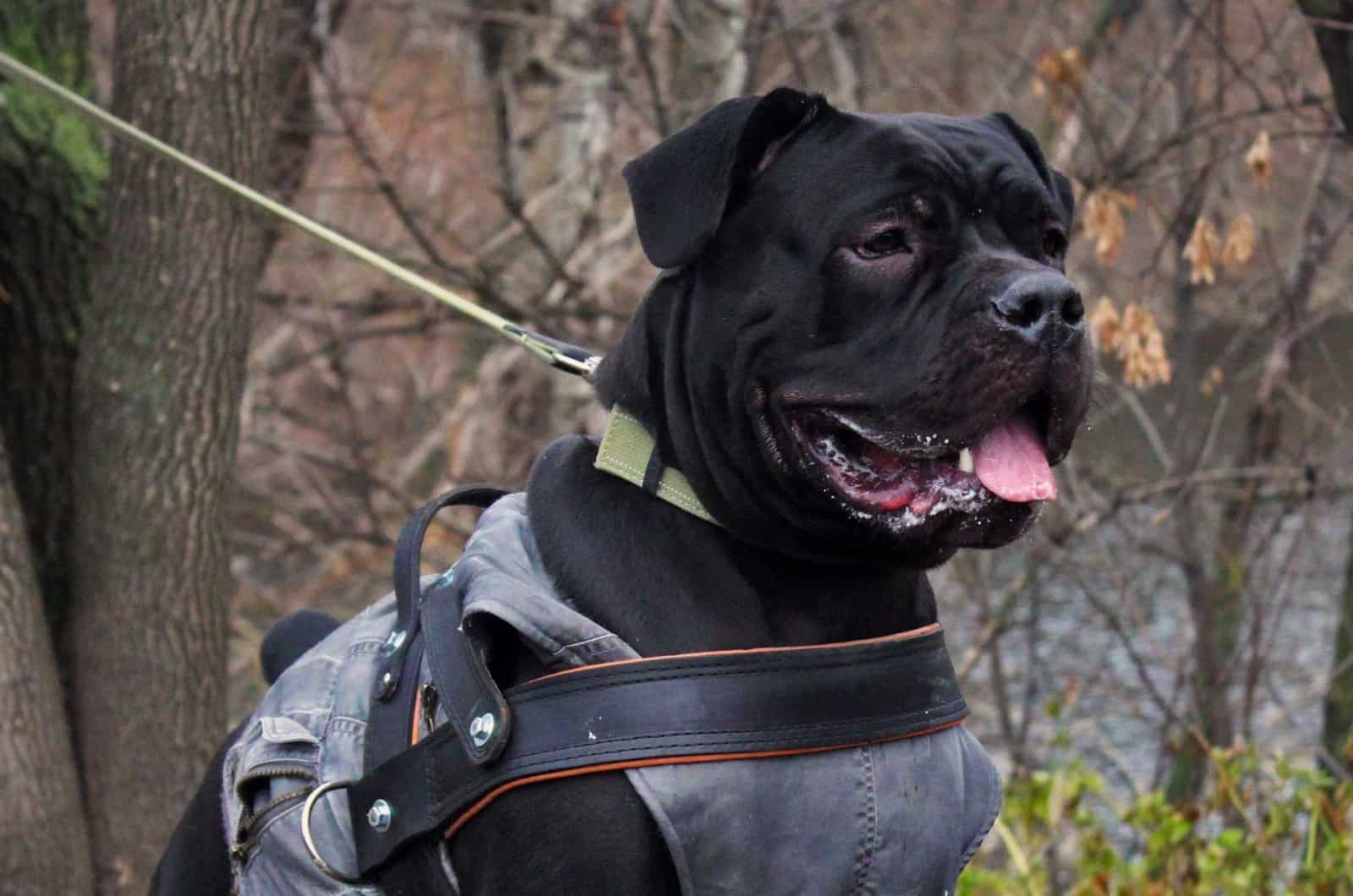
The Boerboel is not the type for inexperienced dog owners because it is a guarding, territorial breed. He is unwavering, collected, brilliant, and incredibly devoted. Boerboels depend on their people, and they must remain an essential member of their family group in order to survive.
Early socialization and disciplined, long-term obedience training that is started at a young age is essential due to their innate protective tendencies.
Because of their docile and laid-back personality, black Boerboel puppies may fool inexperienced owners into believing that these traits will persist. However, constant training is necessary before these traits start to wane.
Socialization
Boerboels are dominating dogs that require an authoritative trainer who will set limits without ever being abusive, but only employ positive reinforcement. This dog is not appropriate for new owners.
Early socialization should be combined with patience and regular training in order to reduce aggressiveness, and Boerboels need to have enough cognitive and physical stimulation because boredom and anxiety can cause bad behavior.
These dogs will be well-behaved when introduced to various environments and surroundings in their puppyhood. They are good dogs, and they will be happy to please and protect their owner at all costs.
This dog breed will grow to be a big guard dog, which means that they will only be able to be controlled if adequately socialized and trained. They are large dogs that can weigh up to 200 lbs, and walking them on a leash if they are not properly socialized is practically impossible.
Therefore, try to introduce them to various kinds of animals of all sizes, as well as other dog breeds.
Nutrition
The Boerboel should thrive on premium dog food, whether it is manufactured commercially or made at home, under the guidance and authorization of your veterinarian. Any diet must be suitable for the dog’s time of life (puppyhood, maturity, or elderly).
It’s essential to keep an eye on your dog’s weight and calorie intake because some breeds are prone to obesity. Treats may be a valuable training tool, but offering them in excess might lead to obesity. Therefore, it would be great to check out the Boerboel feeding chart!
Bear in mind that this is a huge dog, and that it will need a LOT of food. They can be up to 200 lbs, which means that their meals, as they become adults, will be huge.
Discover which foods fit the bill for canine consumption and which don’t. If you have any worries regarding your dog’s weight or diet, consult your veterinarian. Fresh, clean water should always be accessible.
Large to giant breeds with moderate to vigorous-intensity exercise needs ought to be considered in the Boerboel’s diet. For guidance on what to serve your black Boerboel, and the proper portions, speak with your veterinarian or a licensed dog nutritionist.
Their nutritional demands will change as they transition from puppyhood through adulthood and senior age. Keep an eye on these dietary needs.
Official Kennels And Groups For This Dog Breed
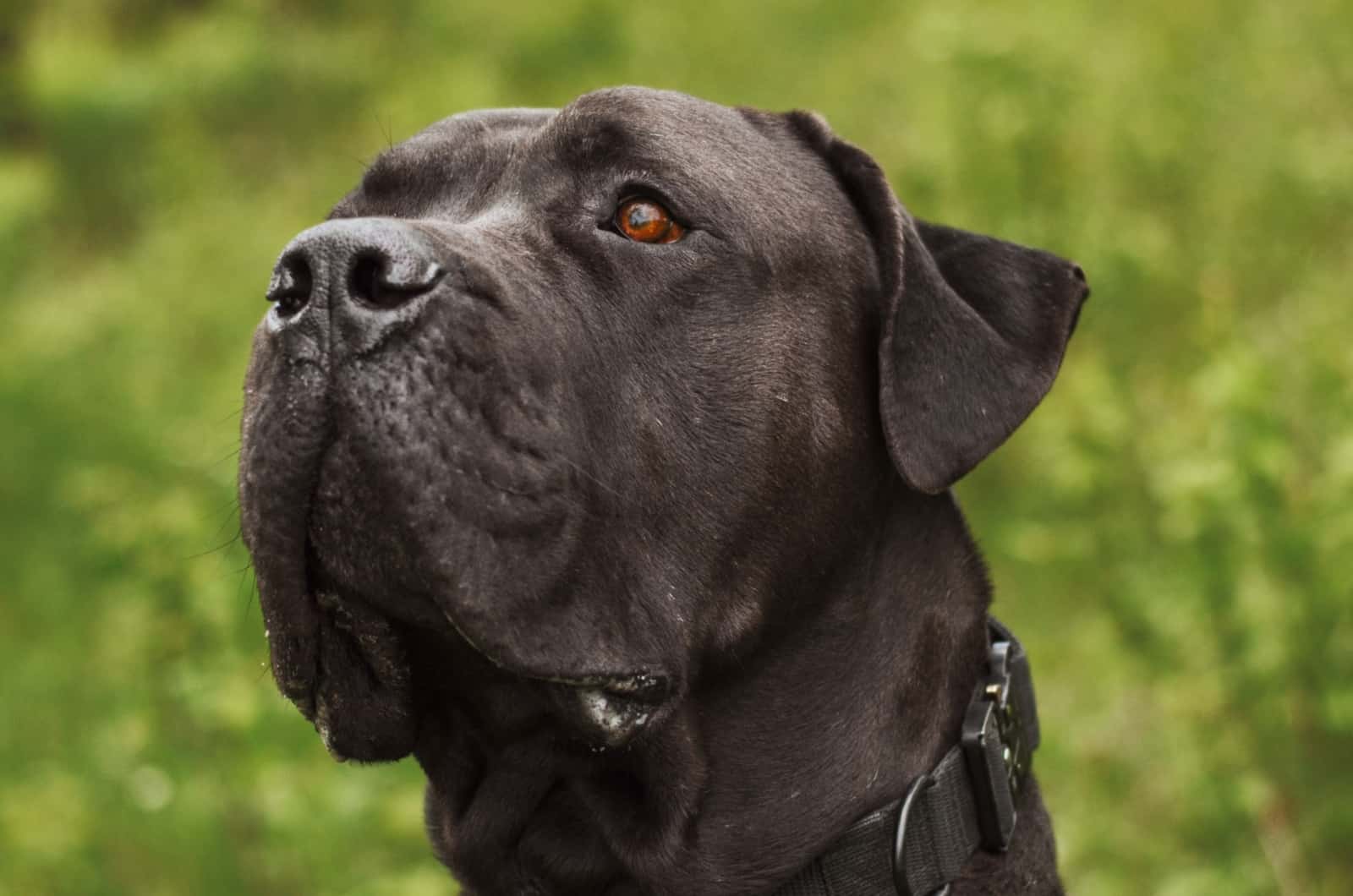
The Boerboel has been considered a landrace in South Africa since the Animal Improvement Act, which classifies a breed of animal that is native to or produced in the country as a landrace.
The South African Boerboel Breeders’ Society (SABBS) is a licensed “animal breeders society” that is given authority under this Act. The only organization permitted by the Act to formally register Boerboels is the SABBS.
SABBS is in charge of the standards governing the identification, recording, evaluation, and improvement of the Boerboel dog breed because it is the legally-recognized custodian of the species.
Those Boerboels listed on its records are still recognized by the South African Kennel Union.
Another association that is connected to these official groups is the South African Boerboel association (SABA). This Kennel Union follows the Boerboel breed standards, and is known for giving fantastic advice to Boerboel breeders.
In the Boerboel community, there has been much debate over whether black Boerboels seem to be genuine Boerboels. The South African Boerboel Breeders Society (SABBS) has thankfully added black once more to the breed criteria.
Final Word
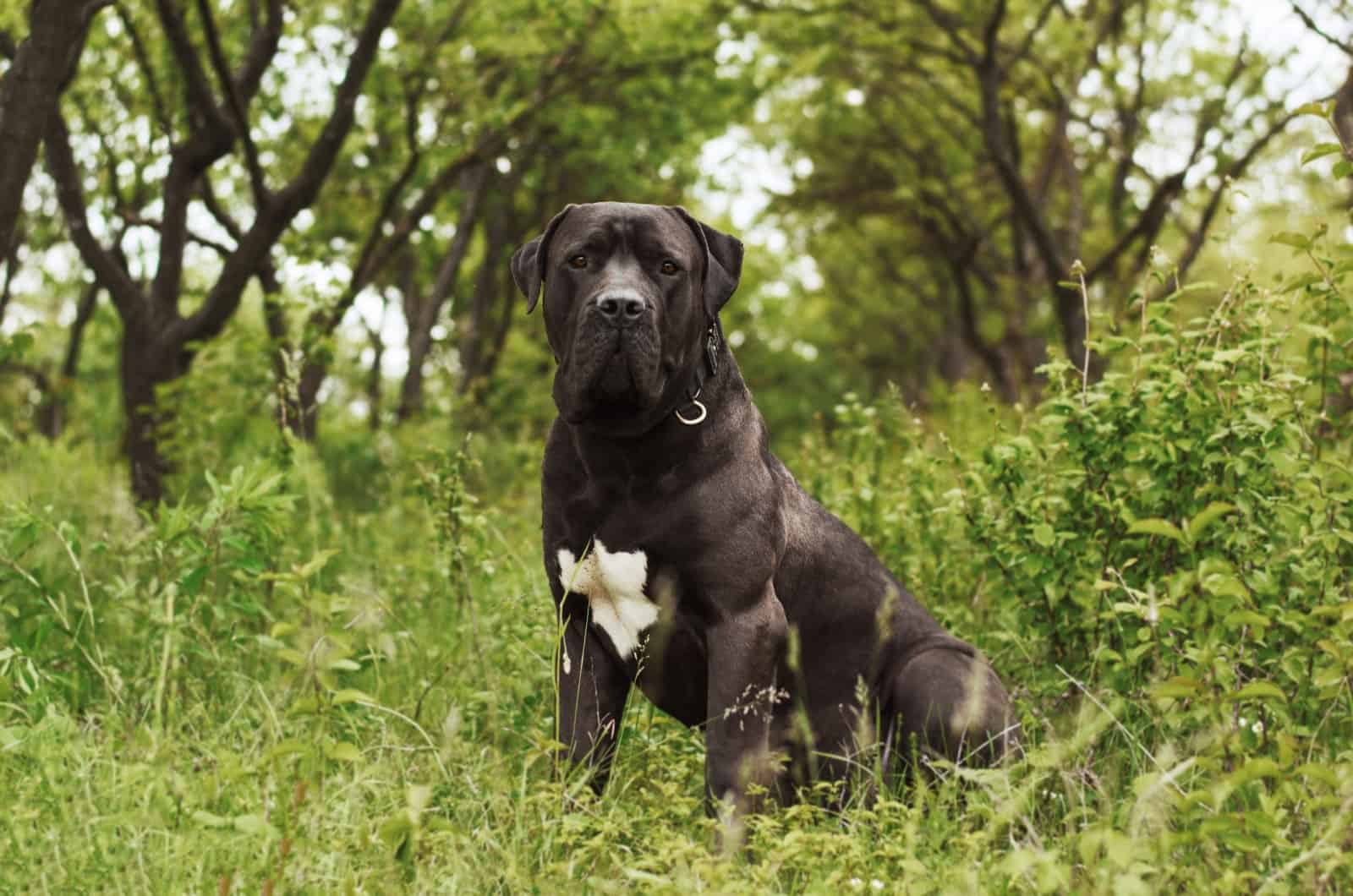
Only their commitment to their residences and family rivals the physical toughness of Boerboels. The dogs that Dutch settlers brought to South Africa to protect their homeland from jackals, tigers, lions, and other ferocious animals are the ancestors of the Boerboel breed.
Today, black Boerboels are revered as watchdogs, defenders, competitors in dog competitions, and fiercely-devoted family pets that adore children.
However, they can be highly aggressive and show aggressive tendencies toward people and other dogs if not properly socialized and trained.
Boerboels need to exercise both their mind and body frequently. Due to their incredible intelligence and astonishing agility for their size, they also have a strong desire for mental and physical stimulation.
Too much time alone with them might cause restlessness and anxiety, which could result in adverse conduct.
They require a trainer who is patient and confident, and a home that can fit their size and training requirements. Finally, they can make excellent family pets and watchdogs in the appropriate environment.
Read Next: Boerboel Price: A Big Dog With A Big Price
